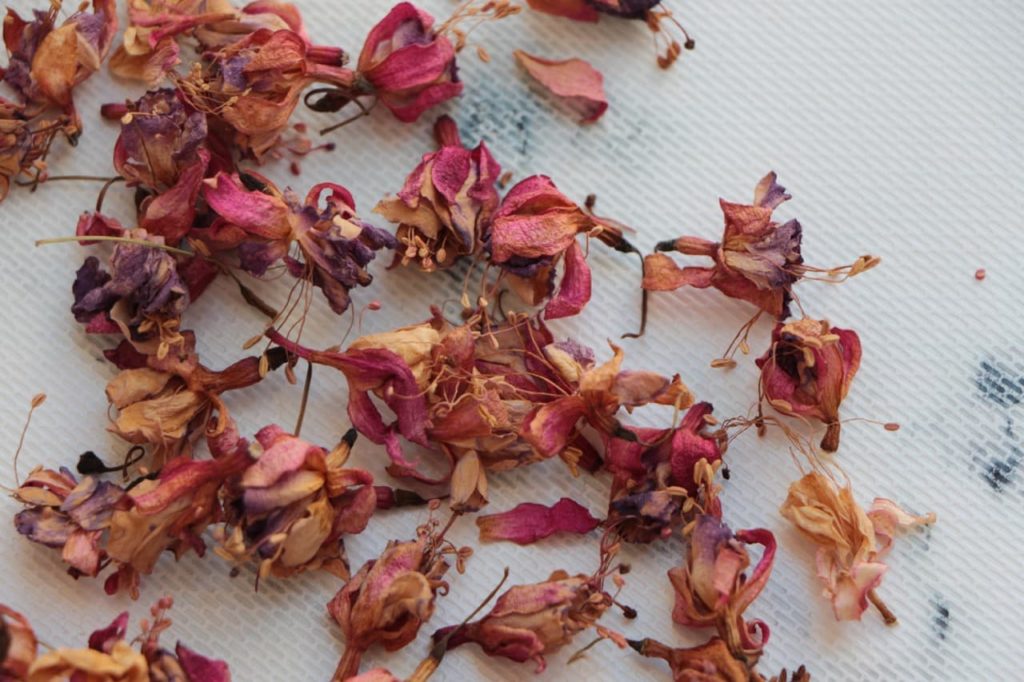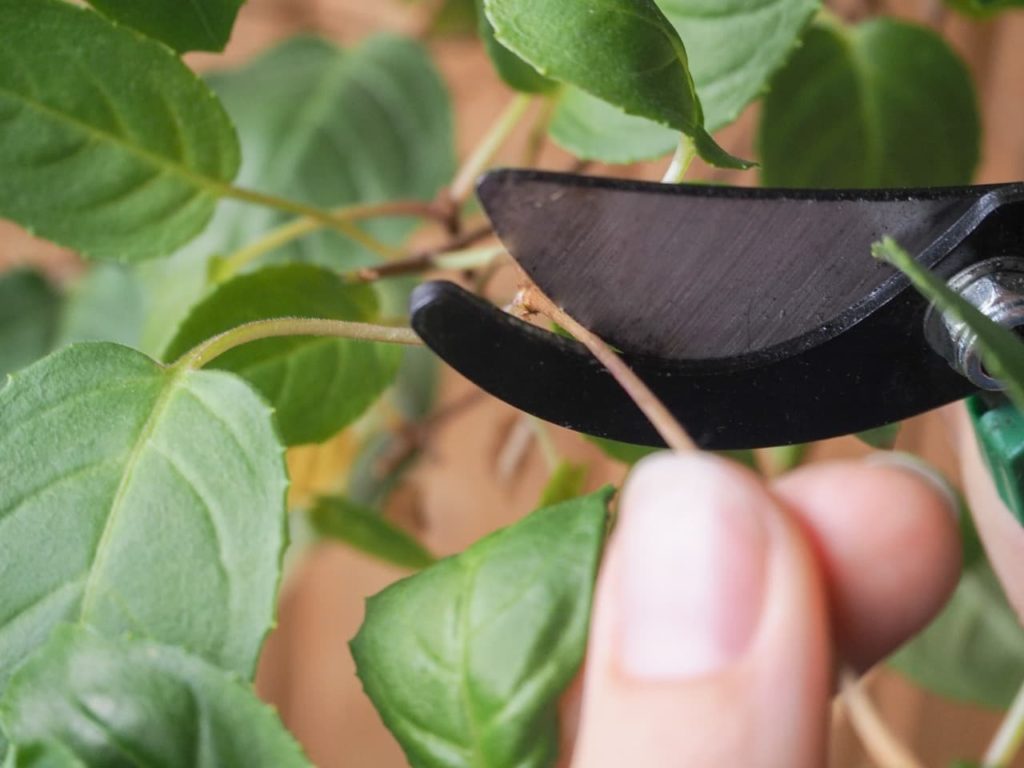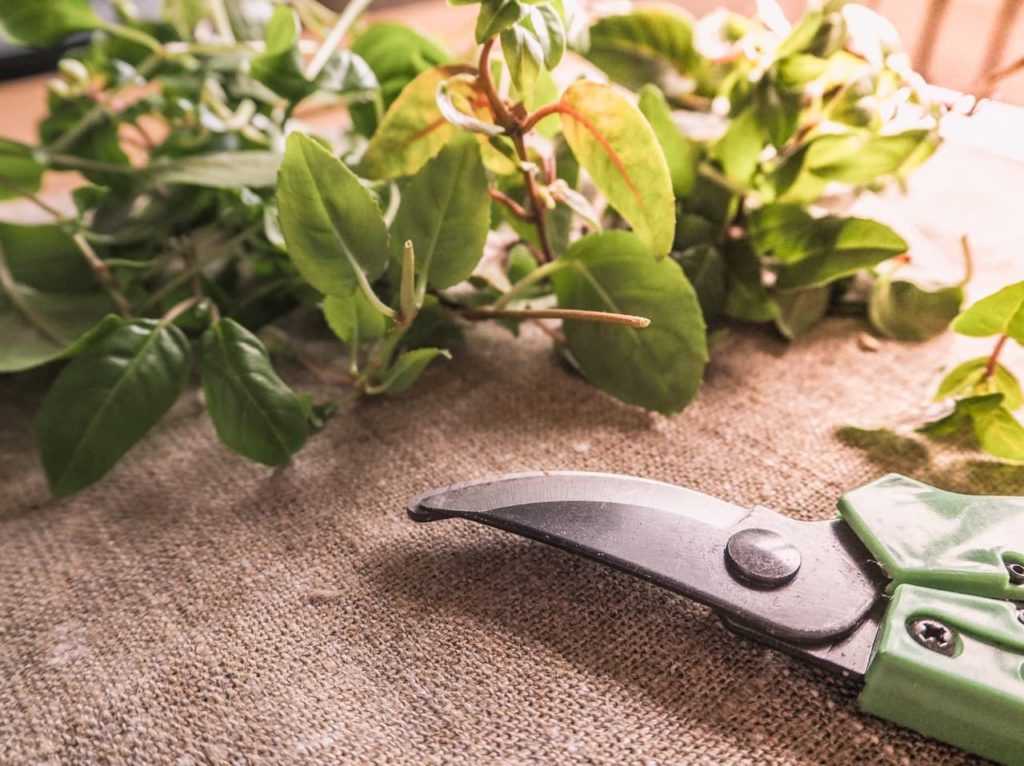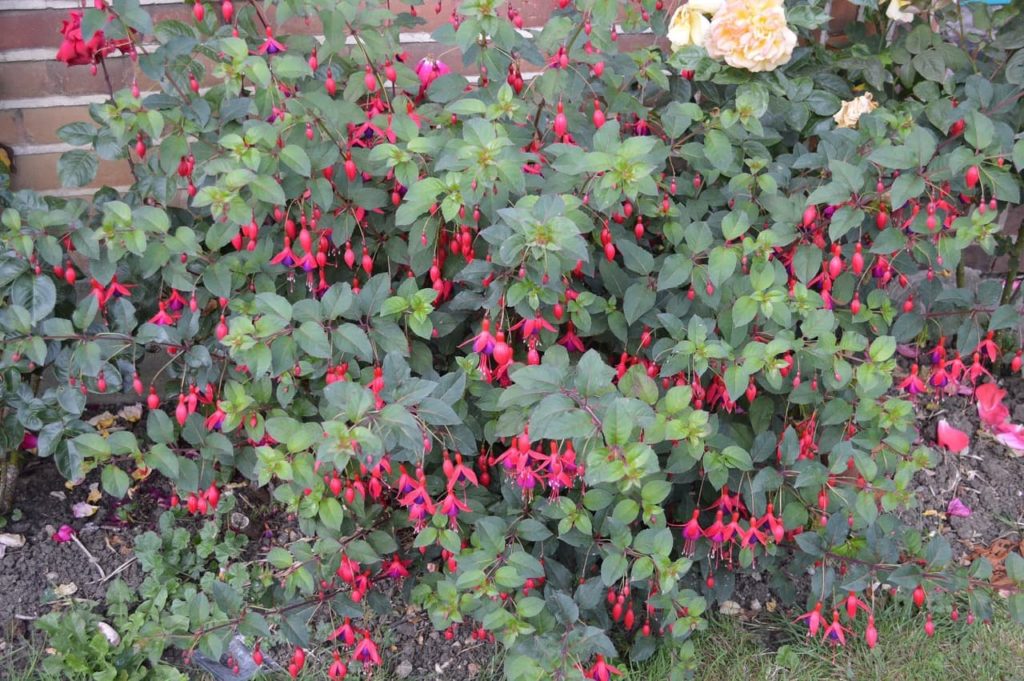Fuchsia Responds Magically To Pruning, But Only If Done Correctly – Here’s How

SHRUBS > FUCHSIA > PRUNING
Reviewed By COLIN SKELLY

Colin is a Horticulturist and Horticultural Consultant with experience in a range of practical and managerial roles across heritage, commercial and public horticulture. He holds the Royal Horticultural Society’s Master of Horticulture award and has a particular interest in horticultural ecology and naturalistic planting for habitat and climate resilience.
Contributions From GAIL BARBER

Gail Barber is the Secretary of the Sutton Coldfield Fuchsia & Gardening Guild with experience of more than 50 years in the garden. Gail even has a cultivar of Fuchsia named after her.
IN THIS GUIDE
FUCHSIA GUIDES
Container Growing
Hanging Baskets
Hardy
Overwintering
Problems
Propagation
Pruning
Sowing
Varieties
Why not be smart and maximise the unique style of a fuchsia plant by pruning it?
After all, it numbers among those plants that respond magically to pruning.
This is partly because a fuchsia blooms on fresh growth and fresh growth is stimulated by pruning.
So, if you devote some time to this gardening activity, you’ll get to see more of those intoxicating blooms in those amazingly vibrant two-toned oranges, reds and purples.
Pruning fuchsias is not a drawn-out or complicated process to be undertaken once a year.
Instead, it is a fairly simple upkeep task that is performed in phases throughout the year.
I explain the different pruning tasks under suitable headings below.
| Difficulty | Easy |
| Equipment Required | Gardening gloves, secateurs |
| When To Prune | Depends on the pruning job |
Deadheading Fuchsias
This simple task can be performed throughout the flowering season.
“Like many plants, removing dead flowers and stopping the plant from setting seed will increase the number of blooms and extend the flowering period,” says Gail Barber from the Sutton Coldfield Fuchsia Society and Gardening Guild.
However, fuchsia flowers develop into berries that look halfway between black cherries and grapes.
These berries are not only edible but are quite tasty, having been enjoyed in South America for centuries.1The Inca and the Fuchsia. (2020, June 20). The Fuchsietum | a Garden in Portland. Retrieved April 25, 2023, from https://fuchsietum.com/blog/files/Inca-and-the-fuchsia.php

If you’re not interested in the berries and want to keep the flowers coming, then deadhead.
As soon as flowers are withered, snip the stalk right where it joins the stem.
Deadhead an entire cluster of withered and withering blooms by trimming the terminal part of the mother stem itself.
Make the cut just above the outermost set of leaves nearest the faded blooms.
The Initial Pruning Steps For All Types
If you have grown a Fuchsia from scratch or bought a small potted specimen, allow it to grow for four to five months so the plant can become bushy, then start to pinch out the growing tips.
You can also snip them just above the uppermost node.
Do so every three or four weeks until a sufficient number of new shoots develop.

“If you live in a mild area, you may cut back a little more,” shares Terry Sykes, a member of the West Yorkshire Fuchsia and Pot Plant Society.
“Cover the crown over with spent compost to protect the roots after pruning.
“When signs of new growth appear in spring, cut back to green buds fairly low down to help give a nice shape.”
Pruning Bushy & Upright Varieties
Prune crossing and straggly branches.
Other than that, you may trim all the stems, shaping the plant however you please.
In general, an even and compact shape should be the target, unless you are growing a lollipop-style plant.

“A lollipop shape on a clear stem is known as a standard,” shares Master Horticulturist Colin Skelly.
“This is achieved by allowing a main stem to develop and pruning outside stems.
“When the main stem gets to the desired height, prune the tip and allow the side shoots to form the desired lollipop (or other shape) by shaping side shoots at the top of the stem and continuing to remove side shoots lower down.”
The length of the trimmed stems should be at least 10cm from the soil.
Trailing & Mat-Forming Types
Prune mature plants in late winter to early spring just as the plant is about to wake up.
Prune the outer stems or trim them severely.
They should not be protruding past the container’s rim.
Then, trim the central stems to 10cm from the soil.
Ongoing Maintenance Pruning
You may have neglected to prune your fuchsias in spring or perhaps they have grown too vigorously.
“I planted ‘Mrs Popple’, a wonderfully vigorous grower, by my front door about 30 years ago,” shares Gail.
“It puts on an amazing display of flowers every summer, flowering through to the first frosts, but I have to constantly cut it back throughout the year as its growth blocks the front door!”

In any case, fuchsias are quite amenable to a midseason trim and their reaction will be most pleasant, with fresh growth and renewed blooming.
At any time from summer to mid-autumn, you can cut back all types by about a half of their original lengths.
The bushy head may be trimmed by up to one-third.
References
- 1The Inca and the Fuchsia. (2020, June 20). The Fuchsietum | a Garden in Portland. Retrieved April 25, 2023, from https://fuchsietum.com/blog/files/Inca-and-the-fuchsia.php

